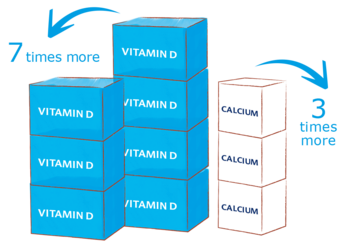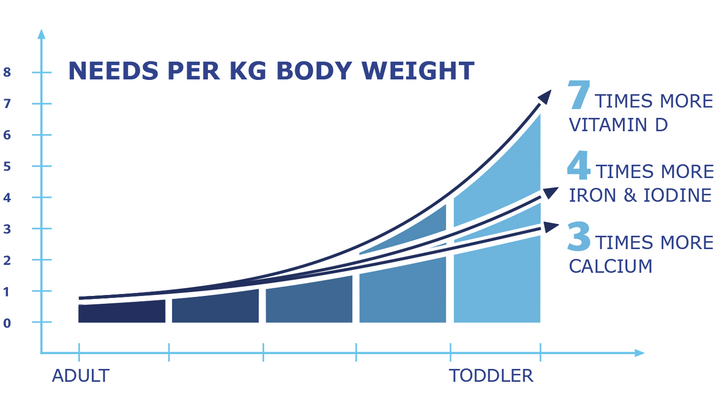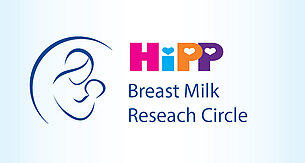Why does your child need 7 times more vitamin D?

Your child’s first birthday is an important milestone in their development. Your little one will start to actively explore the world around them. But even if your child already has a big appetite, remember: they are still a toddler, and not a small adult. This is why an age-appropriate diet is very important until your child has reached primary school age. For healthy bone formation, your little one needs 7 times more vitamin D than you.

Calcium and vitamin D are important as they make bones stronger.
Calcium is an important building block for bones. Vitamin D is essential for the normal development of bones and teeth and for boosting the immune system, which is not yet fully developed until the third year of life.
In addition to vitamin D, vitamins A and C also help to support the immune system.
Even though our body can generate vitamin D on its own, exposure to sunlight is one way to help increase vitamin D levels. This is not always possible, however, especially during the winter months, which is why other sources of vitamin D are important. There are only a few foods that can supply our body with sufficient amounts of this essential vitamin. In theory, without exposure to sunlight, kids would have to eat 10-12 eggs, 1 kg of button mushrooms, 1.5 kg of cheese and more than 125 g of salmon to get enough.

A recent study also demonstrated the effect of the different seasons of the year. It showed that sufficient levels of vitamin D in children were only reached during summer, as more than 90% of this vitamin is produced in the skin and only 5-10% absorbed from food.
HiPP JUNIOR COMBIOTIC® can, however, remedy this. A 2013 study by Hower et al. found that the drop in toddlers’ vitamin D levels during winter could be prevented with HiPP JUNIOR COMBIOTIC® 4. In fact it was even possible to increase vitamin D levels.



